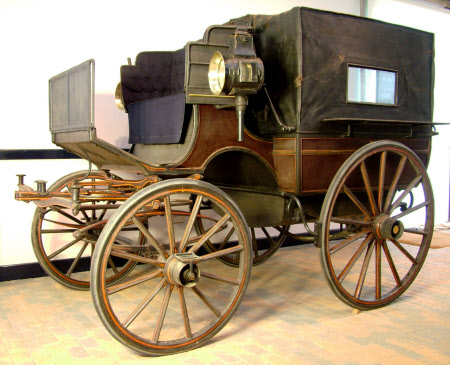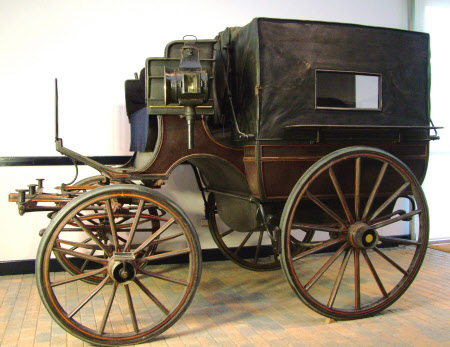Lonsdale wagonette
Hamshaw
Category
Carriages & other vehicles
Date
1880
Materials
Painted wood body with leather hood and wool cloth upholstery, four iron shod wheels.
Measurements
222 x 312.5 x 197.5cm (7ft 3 1/3in x 10ft 3in x 6ft 5 3/4in)
Place of origin
London
Order this imageCollection
National Trust Carriage Museum
NT 272884.1
Caption
The special feature of this carriage type, which the 5th Earl of Lonsdale, the famous Yellow Earl, claimed to have originated, is the folding head, each half of which folds down over the side of the vehicle, making it a suitable carriage for all weathers and purposes. As on all wagonettes, access to the body is through a door at the back and the seats are arranged lengthways on each side. Depending on the required purpose and use of this carriage, either a hunt meet or a trip to the station, it was quite appropriate for both the owner or coachman to be seen driving it.
Summary
Lonsdale Wagonette built by Hamshaw of Leicester circa 1880. Lonsdale Wagonette (four wheels) for a pair of horses. This carriage has a centre pole and is sprung on full elliptic and leaf springs. The interior trim is in blue with two cushions. There are two candle lamps. Painted in maroon, red and black livery with the royal cypher on side 'Honi Soit Qui Mal y Pense'. Ex Windsor Castle.
Full description
This early 20th century carriage, built by Hamshaw, Leicester, is on loan from The Science Museum, Kensington. It is one of a number of carriages from the Royal Mews that were surplus to requirements and were given to the museum by King Edward VIII. The special feature of this carriage type, which the Earl of Lonsdale, the famous Yellow Earl, claimed to have originated, is the folding head, each half of which folds down over the side of the vehicle. When the Earl’s prototype was produced, several other carriage builders said they had built a similar carriage before him, but his character and his fame as a sportsman ensured that it was always associated with him, and continued to be named after him. As on all wagonettes, access to the body is through a door at the back and the seats are arranged lengthways on each side. It can carry six passengers and was pulled by a pair of horses. The wagonette is one of the few carriage types that were suitable to be driven by either the owner or his professional coachman.
Marks and inscriptions
On the side. : royal cypher: 'Honi Soit Qui Mal y Pense' On the front seat board. : 3855 On the boot cross bar.: 3855 On front nearside axle components.: B3855 HAMSHAW LEICESTER 8*902 On front offside axle components.: B3855 HAMSHAW LEICESTER 8*902 On rear nearside axle components.: B3855 HAMSHAW LEICESTER 8*902 On rear offside axle components.: B3855 HAMSHAW LEICESTER 8*902
Makers and roles
Hamshaw , coach builder


